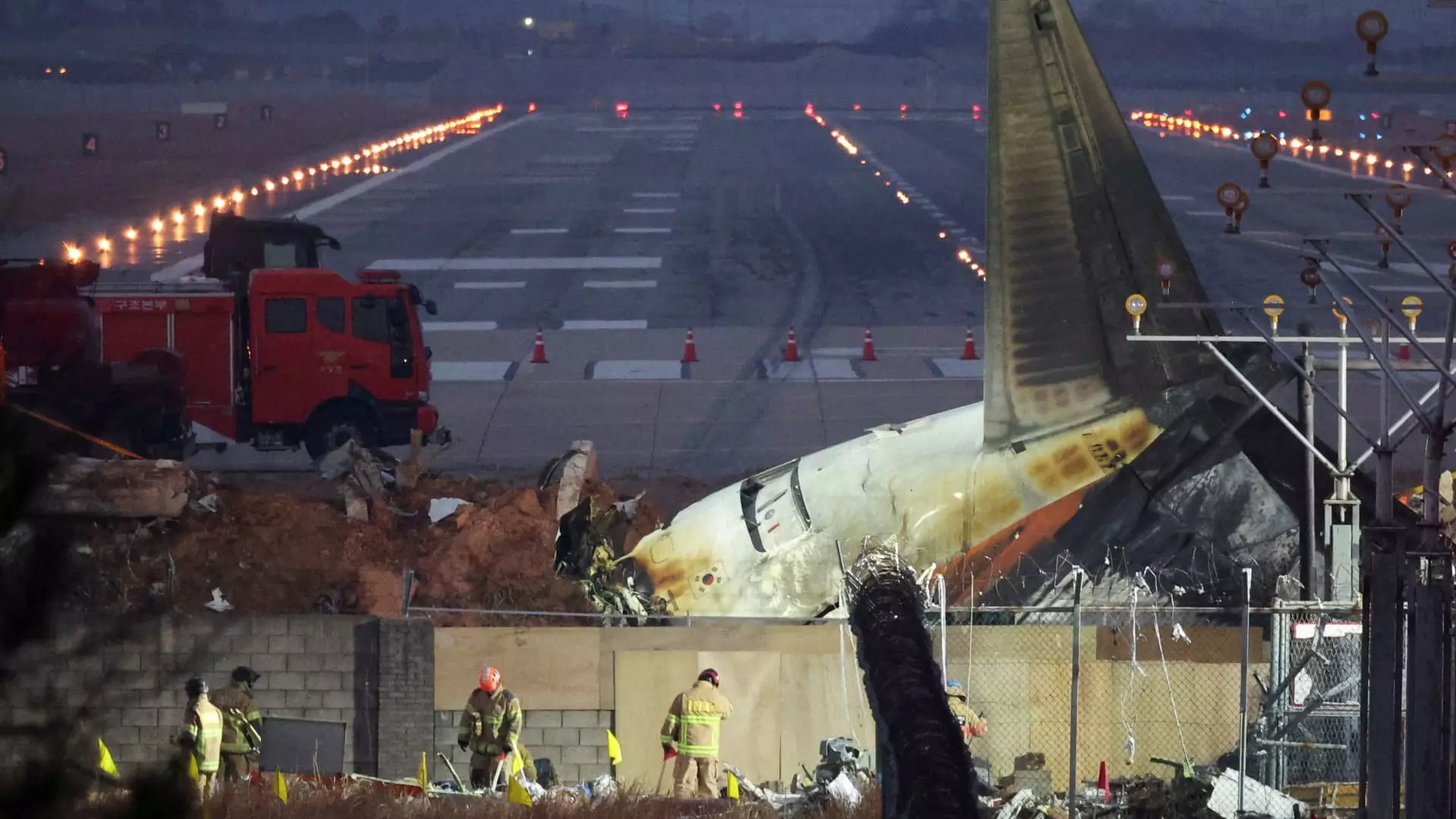On a devastating Sunday morning, Jeju Air Flight 7C2216 met a tragic fate, resulting in the loss of 179 lives among the 181 passengers and crew aboard. The Boeing 737-800, which had arrived after an overnight flight, belly-landed on the runway with its landing gear and flaps reportedly retracted. Upon impact, the aircraft collided with an unnaturally placed mound of dirt and a concrete barrier, erupting into flames. This incident has raised serious questions regarding the design of the airport’s runway and the safety measures in place that may have contributed to one of South Korea’s most catastrophic aviation disasters.
Aviation safety experts are scrutinizing the airstrip’s design, particularly the positioning of the hazardous mound and concrete wall located at the runway’s end. These structural elements are not merely design oversights; they represent fundamental flaws in airport safety protocols. Todd Curtis, a former Boeing safety engineer and founder of Air Safe Media, emphasized that such obstacles could severely hinder an aircraft’s capacity to come to a safe stop. The design that combines these features at the runway’s edge directly conflicts with established safety guidelines aimed at minimizing risks associated with runway overruns.
As investigations unfold, a comprehensive examination of multiple factors such as aircraft maintenance practices, flight crew scheduling, and cockpit voice recordings will be undertaken. Preliminary indicators suggest the possibility of a bird strike that may have resulted in an engine failure, but experts caution that it is too early to draw definitive conclusions. The meticulous nature of aviation investigations means answers will not emerge quickly; the complexity of the situation necessitates a thorough and prolonged inquiry.
To underscore the importance of effective safety barriers, one can look at other airports with successful implementations of engineered material arresting systems (EMAS). Airports like LaGuardia have effectively utilized this technology, which is designed to absorb the impact of overrunning aircraft and prevent further damage or loss of life. In contrast, the concrete wall at Muan International Airport lacked frangibility—meaning it was not designed to break apart upon impact, a critical factor that could have significantly lessened the tragedy’s toll.
The catastrophic results of this event serve as a wakeup call for airport authorities globally to reevaluate their design protocols and safety measures. As the aviation industry continues to grow, so must the commitment to ensuring that runways and their surrounding environments are equipped to safeguard against accidents. The critique of airport designs must spur actionable insights that shape future infrastructure, prioritizing human life above all.
The Jeju Air Flight 7C2216 disaster not only highlights immediate safety oversights but also challenges the aviation community to rethink best practices. As investigators work to piece together the events leading to the crash, one hoped outcome should be clear: a decisive shift toward improved airport safety standards that could prevent tragedies of this scale from occurring again in the future.

